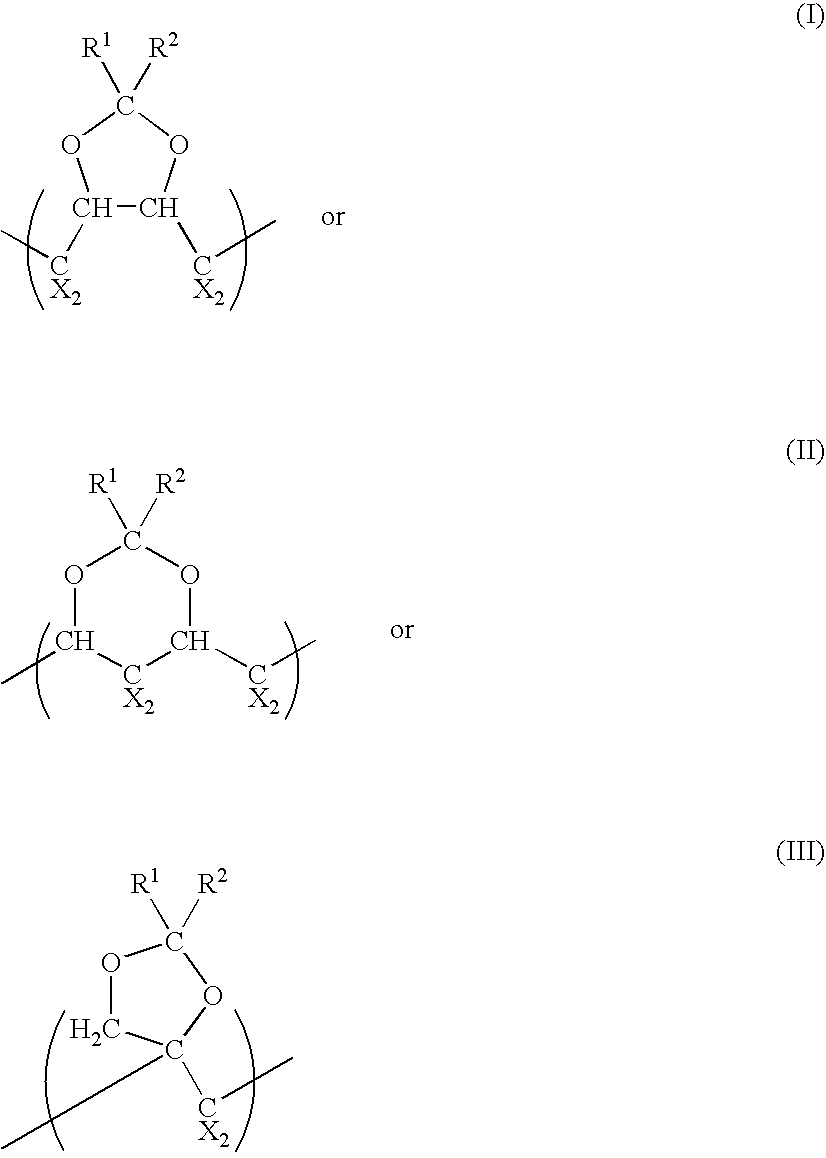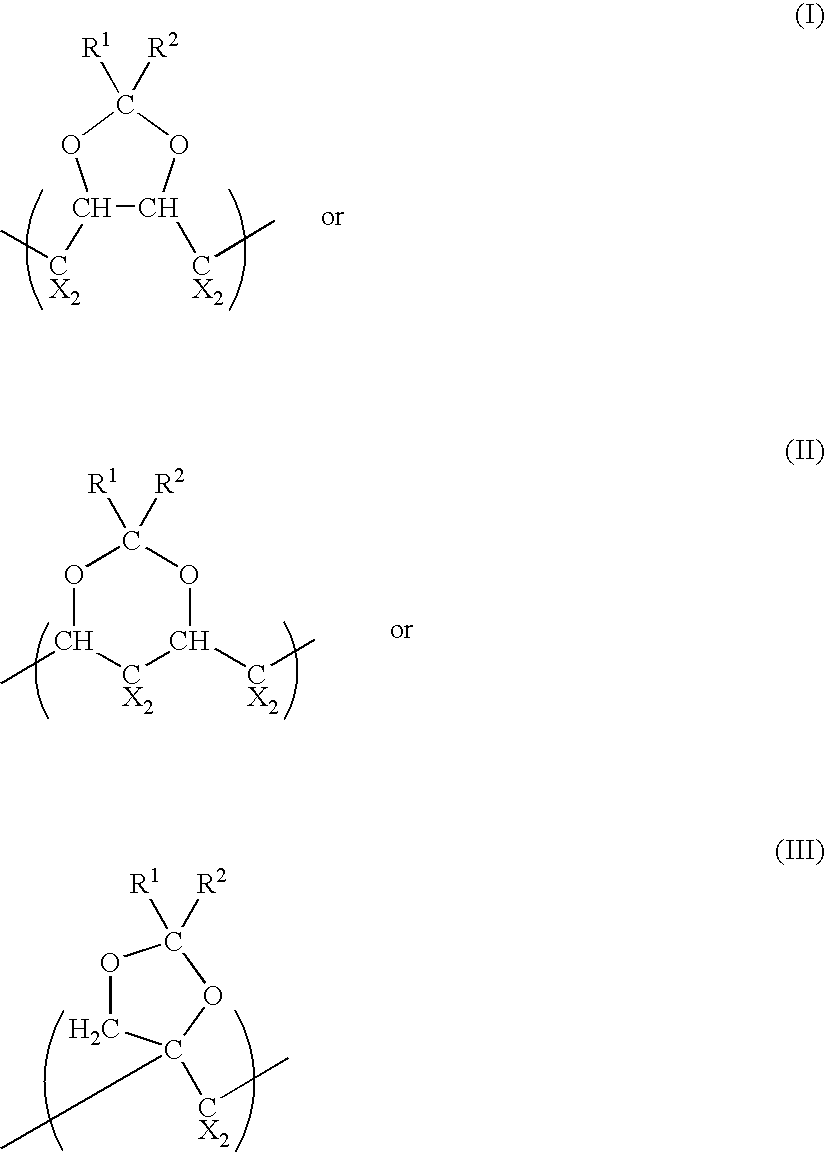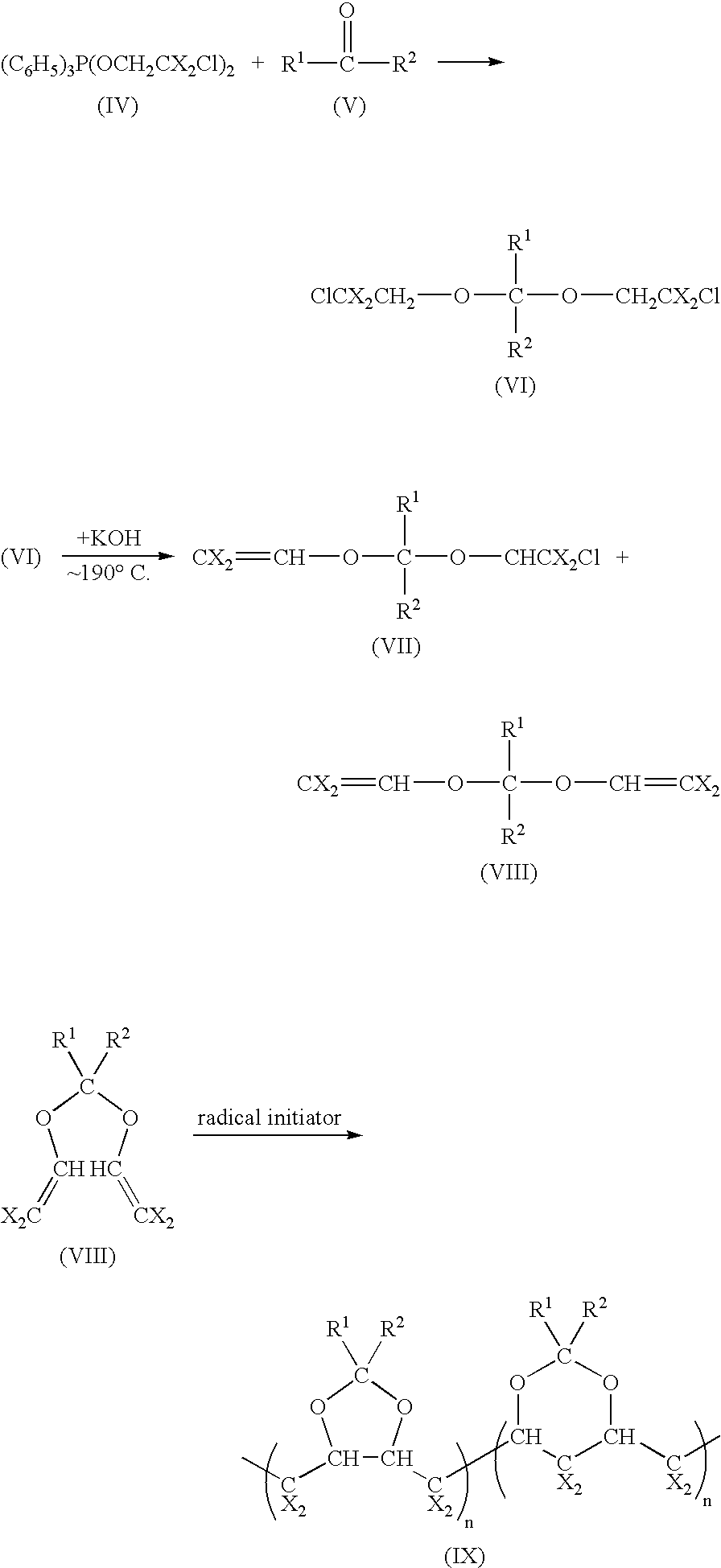Polymeric fluorinated dioxole and medical devices comprising same
a fluorinated dioxole and polymer technology, applied in the field of ophthalmic devices, can solve the problem that rgp lenses are typically quite uncomfortable for wearers, and achieve the effect of increasing the comfort level of users
- Summary
- Abstract
- Description
- Claims
- Application Information
AI Technical Summary
Benefits of technology
Problems solved by technology
Method used
Image
Examples
example 1
Synthesis of (C6H5)3P(OCH2CF2CI)2 (a Species Represented by Formula IV)
[0031] This synthesis is adapted from Z. Yang, J. Org. Chem., Vol. 60, 5696-98 (1995). To a stirred solution of 30 g (0.115 mol) of (C6H5)3P in 300 ml of CH2Cl2 is added a solution of 18.3 g (0.115 mol) of Br2 in 100 ml of CH2Cl2 at−40° C. over one hour. After the addition is complete, the mixture is stirred while the temperature is brought to room temperature for one hour, and then cooled back to−40° C. A mixture of 25 g (0.21 mol) of ClCF2CH2OH and 21.2 g (0.21 mol) of C2H5N in 100 ml of ether and 100 ml CH2Cl2 is added at this temperature over one hour, and then the resulting mixture is warmed to room temperature and stirred for an additional 3.5 hours. After the solids are removed by filtration under nitrogen and the filtrate is evaporated under vacuum at room temperature, a quantity of 50.1 g of (C6H5)3P(OCH2CF2Cl)2 is obtained.
[0032] Similarly, (C6H5)3P(OCH2CX2Cl)2 may be prepared by using (C6H5)3P and C...
example 2
Synthesis of (CF3)2C(OCH2CF2Cl)2 (a Species Represented by Formula VI)
[0033] A solution of 450.1 9 of (C6H5)3P(OCH2CF2Cl)2, which is prepared according to Example 1, in 300 ml CH2Cl2 is transferred into a 1-liter autoclave under nitrogen and then the autoclave is pressurized with 180 g of hexafluoroacetone. After being heated at 150° C. for 3 hours and at 200° C. for 4 hours, the reaction mixture is poured into a flask and distilled to give the desired product (CF3)2C(OCH2CF2Cl)2.
[0034] Similarly, (R1)(R2)C(OCH2CX2Cl)2 may be prepared by using (C6H5)3P(OCH2CX2Cl)2 instead of (C6H5)3P(OCH2CF2Cl)2, and (R1)(R2)C(OCH2CX2Cl)2 instead of (CF3)2C(OCH2CF2Cl)2.
example 3
Synthesis of CF2=CH-O-(C)(CF3)2-O-CH=CF2 (a Species Represented by Formula VIII)
[0035] To a molten KOH at 190° C. is slowly added 21.8 g of (CF3)2C(OCH2CF2Cl)2, which is prepared according to Example 2. The reaction product is condensed in a dry ice trap. The condensed mixture comprises compounds having Formulas X and Xl.
[0036] The mixture is distilled to separate compound of Formula X from compound of Formula Xl.
[0037] Similarly, CX2=CH-O-C(R1)(R2)-O-CH=CX2 may be prepared by using (R1)R2)C(OCH2CF2Cl)2 instead of (CF3)2C(OCH2CF2Cl)2.
PUM
| Property | Measurement | Unit |
|---|---|---|
| Composition | aaaaa | aaaaa |
| Hydrophilicity | aaaaa | aaaaa |
| Hydrophobicity | aaaaa | aaaaa |
Abstract
Description
Claims
Application Information
 Login to View More
Login to View More - R&D
- Intellectual Property
- Life Sciences
- Materials
- Tech Scout
- Unparalleled Data Quality
- Higher Quality Content
- 60% Fewer Hallucinations
Browse by: Latest US Patents, China's latest patents, Technical Efficacy Thesaurus, Application Domain, Technology Topic, Popular Technical Reports.
© 2025 PatSnap. All rights reserved.Legal|Privacy policy|Modern Slavery Act Transparency Statement|Sitemap|About US| Contact US: help@patsnap.com



